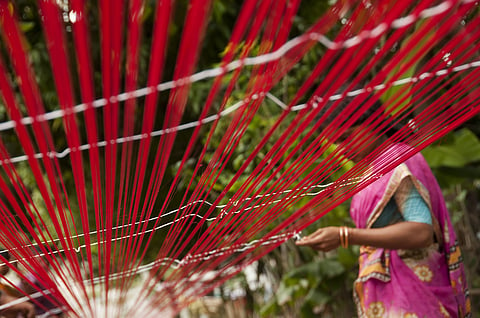
- Destinations
- Experiences
- Stay
- What's new
- Celebrating People
- Responsible Tourism
- CampaignsCampaigns
- SubscribeSubscribe
- Buy Now

A land of varied cultures and traditions, India today is also seeing a renewed interest in traditional textiles, which offer a glimpse into the history of our land. One such fabric finds its origins in 10th century Karnataka.
Patteda Anchu
Originating in the handloom hub of Gajendragarh in Karnataka, Patteda Anchu sari&rsquos value is intertwined with its community. Also known as dundina seere, devaru seere or laxmi seere or pooja seere, Patteda Anchu is made of cotton in a coarse 20&rsquos count, designed specifically for women working on farms. The sari, which takes almost 45 days to weave, was believed to be first offered as a gift to temple dancers. It is also offered to the community&rsquos deity, goddess Yellamma Saundatti, before marriage, and the bride later wears the sari.
Patte means strip and refers to the border of the fabric, lending this sari its unique name. Patteda Anchu is known for its design and exclusive pattern and can be worn from both sides. The biggest differentiator is the thick border that runs along the entirety of the fabric, with a single colour line running over it.
While the sari was made in cotton and had a specific colour palette that included shades like yellow, pink, red and green, it is seeing a revival in terms of the dyes used to make it, including natural dyes that make it more eco-friendly. The textile had almost died out a few years ago due to a lack of demand. Still, efforts of handloom revivalists, such as Dr Hemalatha Jain, have borne fruits, and the weaves in Karnataka have continued to weave the stunning Patteda saris.
